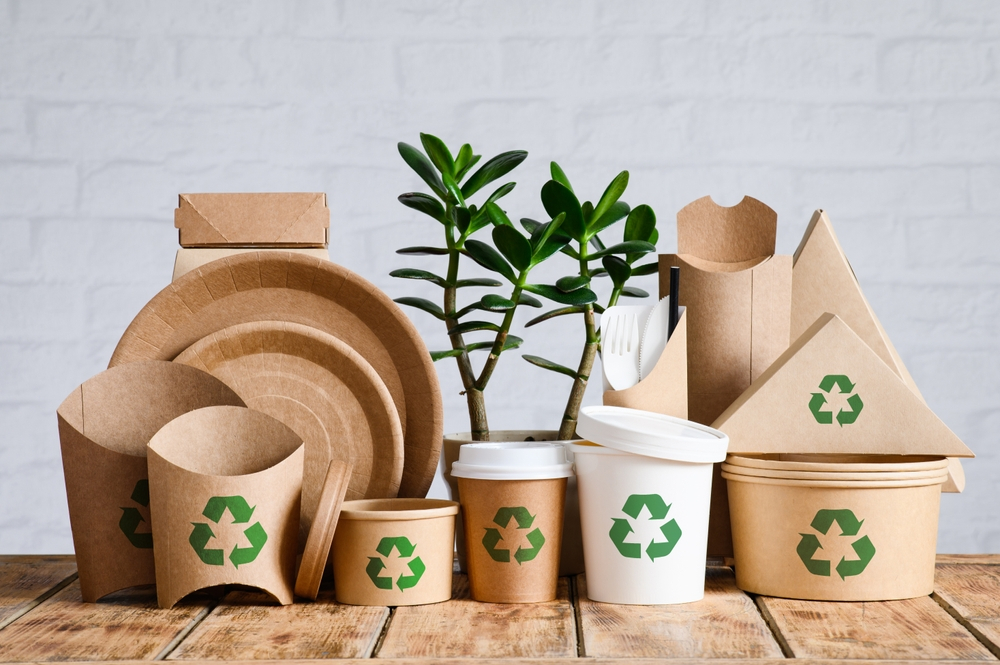
The fashion business is making a big move towards sustainability at a time when people are becoming more aware of the environment. People are becoming more aware of how their choices affect the world, which is helping the idea of “Green Glam” grow. This article talks about how eco-friendly fashion choices can help the environment and make the fashion business greener and more moral.
Reduced Carbon Footprint:
Cutting down on carbon pollution is one of the main ways that sustainable fashion helps make the world a healthier place. Clothes that are made the old-fashioned way are often sent long distances, which is very bad for the environment. On the other hand, sustainable fashion tries to lower the fashion industry’s impact on climate change by using eco-friendly materials, making clothes locally, and paying workers fairly.
Eco-Friendly Materials:

The use of eco-friendly materials is a cornerstone of sustainable fashion. Traditional fabrics like cotton often require vast amounts of water and pesticides for cultivation. In contrast, sustainable alternatives such as organic cotton, hemp, bamboo, and Tencel use fewer resources and have a lower environmental impact. These materials not only keep important resources from running out, but they also lessen the damage that normal farming does to the environment.
Circular Fashion Economy:
The Circular Fashion Economy is a new way of thinking about the fashion business that promotes sustainability and caring for the environment. At its core, this idea aims to create a closed-loop system that reduces waste and makes the best use of resources throughout the lifetime of clothing. The focus on recycling and reusing textiles is one of the most important parts of this approach. Traditional fast fashion, which makes clothes quickly and then throws them away, has led to a worrisome rise in textile waste around the world. Circular fashion, which advises people to purchase clothes made of recycled materials, provides a solution to this issue. Not only does this lower the need for new raw materials, but it also keeps a lot of clothes from going to landfills. Also, circular fashion encourages different ways of buying things, like clothing swaps and shopping. This creates a culture of reusing things and lowers the fashion industry’s total environmental impact. People who take part in these activities help make the fashion industry more sustainable and eco-friendly, which leads to a healthier world in the long run.
Ethical Labor Practices:
In addition to caring about the environment, sustainable fashion also deals with moral issues linked to how workers are treated. A lot of well-known fashion names send their production to countries with low wages and bad working conditions. But fair labour methods are a big part of sustainable fashion. They make sure that workers get paid fairly and are treated fairly. This is good for human rights and makes the business more socially responsible.
Longevity and Timeless Design:
Sustainable fashion pushes designers to make classic styles that last longer and don’t go out of style. Sustainable clothes are made to last, unlike fast fashion, which encourages styles to come and go quickly. Buying high-quality items that will last a long time not only cuts down on the need for replacements, but it also lowers the damage that constant production does to the environment.
Consumer Awareness and Empowerment:

People who are aware of sustainable fashion and have the freedom to choose what they buy can make smart decisions. As people learn more about how fast fashion affects the world and society, they are better able to change how the industry works by the choices they make. Supporting brands that are fair and good for the environment is a big part of giving consumers more power in sustainable fashion. By buying these brands’ goods, customers help change the fashion industry through demand, which supports eco-friendly businesses and forces traditional fashion companies to rethink how they do things. Consumers who know what they’re doing can use transparency to hold brands responsible for the damage they cause to society and the earth. The push for openness creates a mindset of responsibility, which forces businesses to change their ways to be more ethical and environmentally friendly. In the end, customer education and empowerment are what move the fashion industry towards a more responsible and eco-friendly future.
Advocacy and Activism for Consumers:
The Green Glam trend has led to advocacy and activism for consumers. People are asking fashion brands to be more open about their supply lines and environmental practices more and more. This change in how people act is a strong force that pushes brands to put ecology and ethics first so they can meet the changing needs of their customers.
Conclusion:
Sustainable fashion choices emerge as a powerful catalyst for positive change as a result of the pursuit of “Green Glam.” By reducing carbon footprints, utilizing eco-friendly materials, embracing a circular fashion economy, promoting ethical labor practices, and encouraging timeless design, individuals can actively contribute to a more sustainable and planet-friendly fashion industry. In response to the growing importance that consumers place on these factors, the fashion industry is undergoing a transition towards a more environmentally conscious and responsible future.


